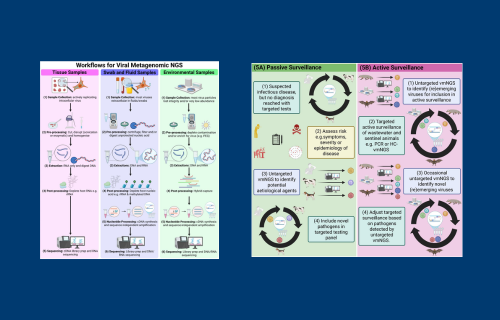New research will serve as a key reference for advancing integrated pandemic preparedness efforts across human, animal and environmental health sectors
Tuesday, 14 October, 2025
Share

Congratulations to UCD School of Medicine’s Associate Professor Virginie Gautier and Post Doc Research Fellow Tristan Russell, and to all those involved, on producing the first peer-reviewed publication to come from the (opens in a new window)OH-ALLIES project.
Recently published in the International Journal of Molecular Sciences, the paper is a review of viral metagenomic next-generation sequencing for One Health discovery and surveillance of (re)emerging viruses and will serve as a key reference for advancing integrated pandemic preparedness efforts across human, animal and environmental health sectors.
Abstract
Viral metagenomic next-generation sequencing (vmNGS) has transformed our capacity for the untargeted detection and characterisation of (re)emerging zoonotic viruses, surpassing the limitations of traditional targeted diagnostics. In this review, we critically evaluate the current landscape of vmNGS, highlighting its integration within the One Health paradigm and its application to the surveillance and discovery of (re)emerging viruses at the human–animal–environment interface. We provide a detailed overview of vmNGS workflows including sample selection, nucleic acid extraction, host depletion, virus enrichment, sequencing platforms, and bioinformatic pipelines, all tailored to maximise sensitivity and specificity for diverse sample types. Through selected case studies, including SARS-CoV-2, mpox, Zika virus, and a novel henipavirus, we illustrate the impact of vmNGS in outbreak detection, genomic surveillance, molecular epidemiology, and the development of diagnostics and vaccines. The review further examines the relative strengths and limitations of vmNGS in both passive and active surveillance, addressing barriers such as cost, infrastructure requirements, and the need for interdisciplinary collaboration. By integrating molecular, ecological, and public health perspectives, vmNGS stands as a central tool for early warning, comprehensive monitoring, and informed intervention against (re)emerging viral threats, underscoring its critical role in global pandemic preparedness and zoonotic disease control.
Read online (opens in a new window)here.